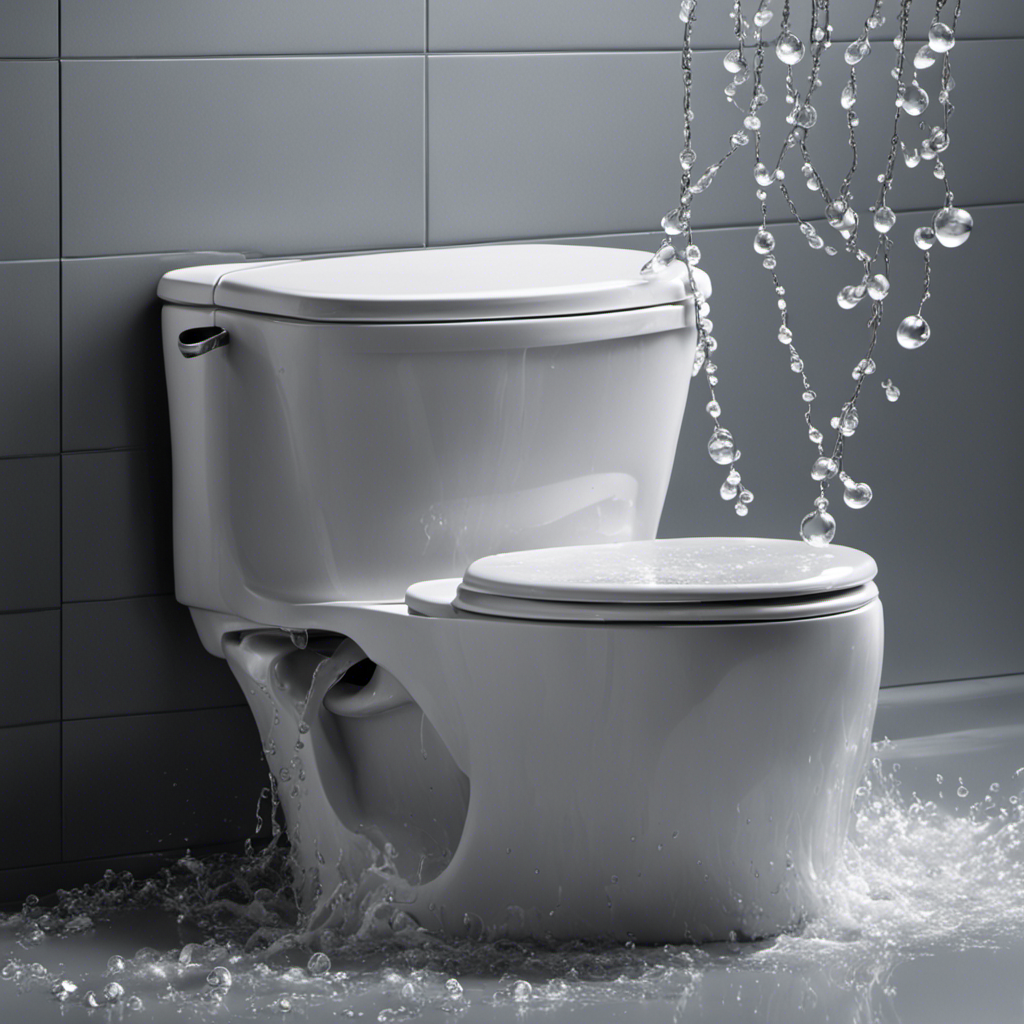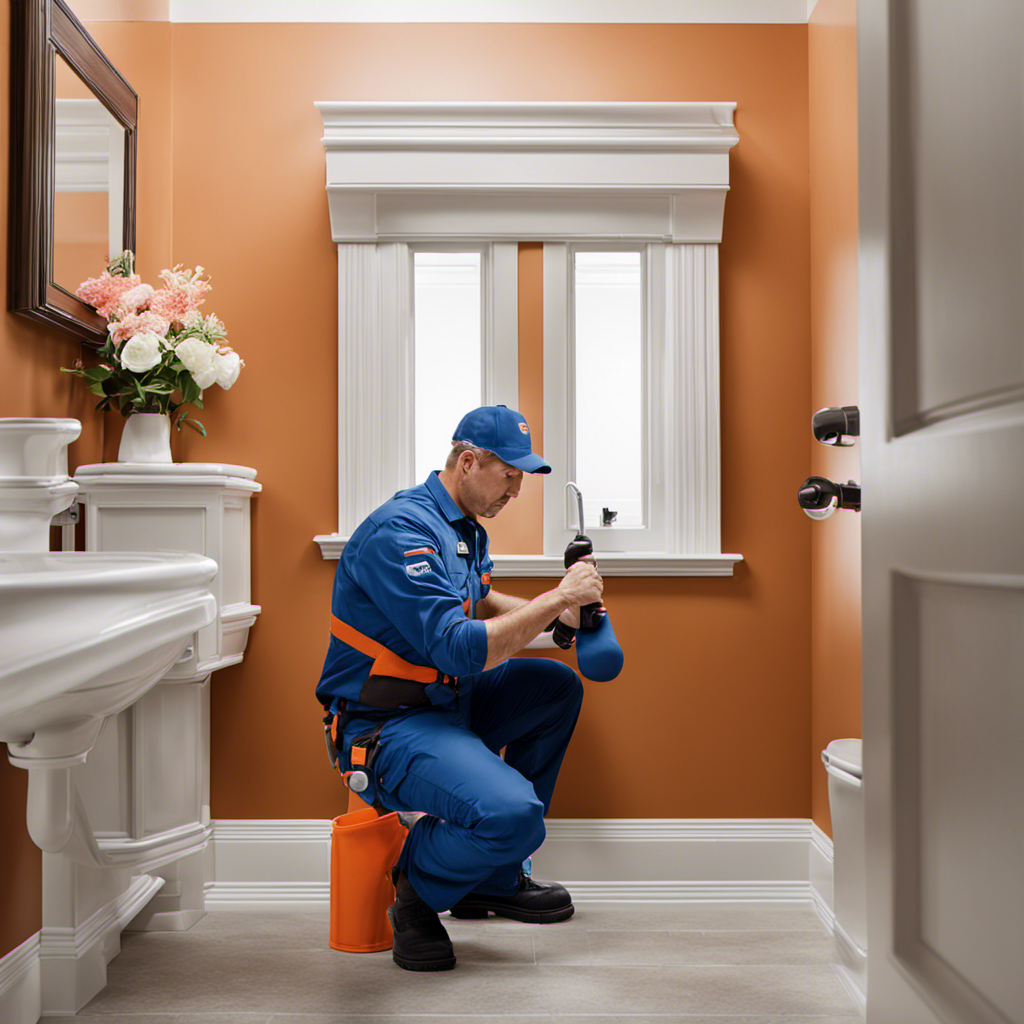Are you fed up with the continuous irritation of a toilet that continues to run after you flush? We understand your frustration. But don’t worry, as we have the solution you’re looking for.
In this article, we will guide you through the steps to fix this common plumbing issue. From checking the fill valve to inspecting the flapper and adjusting the water level, we will cover it all.
Get ready to master the art of fixing a running toilet. Let’s dive in!
Key Takeaways
- Turn off the water supply to the toilet before starting any repairs.
- Inspect and replace the fill valve if it is damaged or worn out.
- Check the flapper for wear or damage and ensure it is properly seated on the flush valve.
- Adjust the water level by turning the adjustment screw on the fill valve to stop the toilet from running continuously.
Check the Fill Valve
To fix a toilet that keeps running after a flush, we need to check the fill valve. The fill valve is responsible for refilling the tank with water after each flush. If it isn’t functioning properly, it can cause the toilet to run continuously, leading to water wastage and noise.

To troubleshoot toilet noise, start by turning off the water supply to the toilet. Remove the tank lid and locate the fill valve, usually located on the left-hand side. Check for any visible signs of damage or wear, such as cracks or leaks. If any issues are found, it may be necessary to replace the fill valve.
This can be done by purchasing a new fill valve from a hardware store and following the manufacturer’s instructions for installation.
Inspect the Flapper
We should first inspect the flapper to determine if it’s the cause of the toilet running after a flush. Here are some common flapper problems to look out for when troubleshooting the toilet fill valve:
- Check for any signs of wear or damage on the flapper. Cracks or tears can cause water to leak, leading to a continuous running toilet.
- Ensure that the flapper is properly seated on the flush valve. If it’s misaligned or not sealing tightly, water can leak through, causing the toilet to run.
- Clean any debris or mineral buildup on the flapper and flush valve. This can prevent a proper seal and result in a running toilet.
- If the flapper is old or worn out, consider replacing it with a new one. This can solve many flapper-related issues and stop the toilet from running.
Adjust the Water Level
After inspecting the flapper, we can now proceed to adjusting the water level in order to fix a toilet that keeps running after a flush. Proper adjustment of the water level is essential for efficient toilet maintenance and water conservation. To adjust the water level, locate the fill valve, which is usually located on the left side of the toilet tank. Turn the adjustment screw clockwise to decrease the water level or counterclockwise to increase it. Aim to set the water level around 1 inch below the top of the overflow tube. This ensures that the tank fills to the correct level without overflowing. Once the water level is adjusted, flush the toilet and observe if it stops running. If the issue persists, it may be necessary to clean or replace the flush valve seal.

Moving on to the next step, let’s discuss how to clean or replace the flush valve seal.
Clean or Replace the Flush Valve Seal
Now let’s address the next step in fixing a toilet that keeps running after a flush by examining how to clean or replace the flush valve seal, ensuring optimal functionality and preventing water leakage. Here are some troubleshooting tips and cleaning techniques to help you with this task:
- Start by turning off the water supply to the toilet and flushing it to drain the tank.
- Remove the flush valve seal by unscrewing the retaining nut or sliding it off the valve.
- Inspect the seal for any signs of damage or buildup. If it’s dirty, clean it with a mild detergent and a soft brush.
- If the seal is damaged or worn out, it’s best to replace it with a new one.
By cleaning or replacing the flush valve seal, you can eliminate any obstructions or leaks that may be causing the toilet to run continuously.
If the issue persists, the next step would be to replace the fill valve or flush valve assembly if necessary.

Replace the Fill Valve or Flush Valve Assembly if Necessary
To address the issue of a toilet that continues to run after flushing, we can proceed to the next step of replacing the fill valve or flush valve assembly if necessary. If cleaning or replacing the flush valve seal didn’t resolve the problem, it’s likely that the issue lies with either the fill valve or the flush valve assembly.
The fill valve is responsible for refilling the tank after each flush, while the flush valve assembly controls the release of water into the bowl during flushing. If either of these components is faulty or worn out, it can result in a running toilet.
To troubleshoot a running toilet, start by turning off the water supply and draining the tank. Then, carefully disconnect the fill valve or flush valve assembly and replace it with a new one if necessary.
This should effectively resolve the issue and stop the toilet from running continuously.

Frequently Asked Questions
How Do I Know if the Fill Valve in My Toilet Needs to Be Checked?
To determine if the fill valve needs checking, listen for a continuous running water sound after flushing. This is a common problem with toilets. Troubleshooting the toilet fill valve is essential to fix it.
What Are the Signs That Indicate a Faulty Flapper in a Toilet?
When a toilet keeps running after a flush, it could be a faulty flapper. Signs of a faulty flapper include water continuously running into the bowl and a weak flush. Troubleshooting is necessary to fix the issue.
Can I Adjust the Water Level in My Toilet by Myself?
Yes, we can adjust the water level in our toilet by ourselves. Troubleshooting toilet leaks often involves checking the fill valve and adjusting the float arm or valve height to regulate the water level.
When Should I Clean or Replace the Flush Valve Seal?
When it comes to troubleshooting common toilet flushing issues, it’s important to know when to clean or replace the flush valve seal. Regular maintenance can prevent a running toilet and ensure proper functionality.

How Can I Determine if I Need to Replace the Fill Valve or Flush Valve Assembly in My Toilet?
To determine if we need to replace the fill valve or flush valve assembly in our toilet, we can perform a series of troubleshooting steps. These steps involve inspecting and testing the components for any signs of damage or malfunction.
Conclusion
In conclusion, fixing a running toilet involves checking and inspecting various components such as the fill valve, flapper, water level, and flush valve seal.
By carefully examining these parts and making necessary adjustments or replacements, you can effectively resolve the issue.
Remember, a well-functioning toilet ensures a smooth and efficient flushing experience, preventing water wastage and potential damage.

So, take action now and bring peace to your bathroom.










